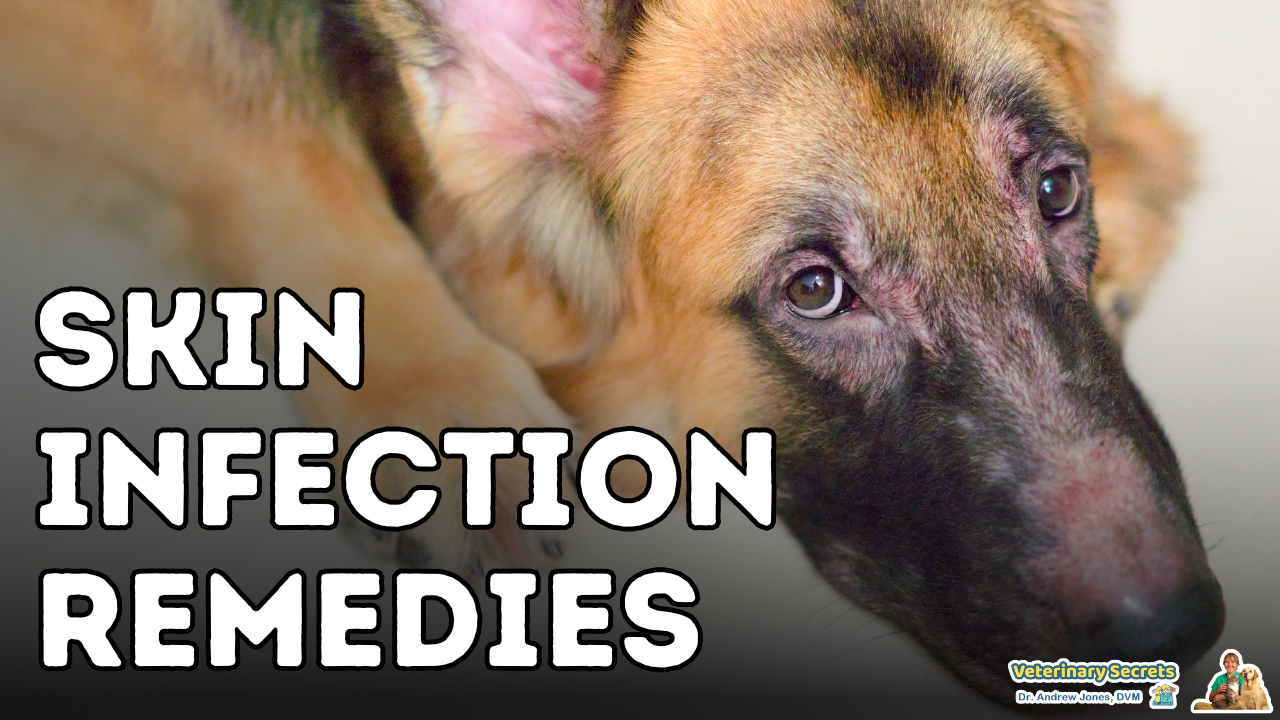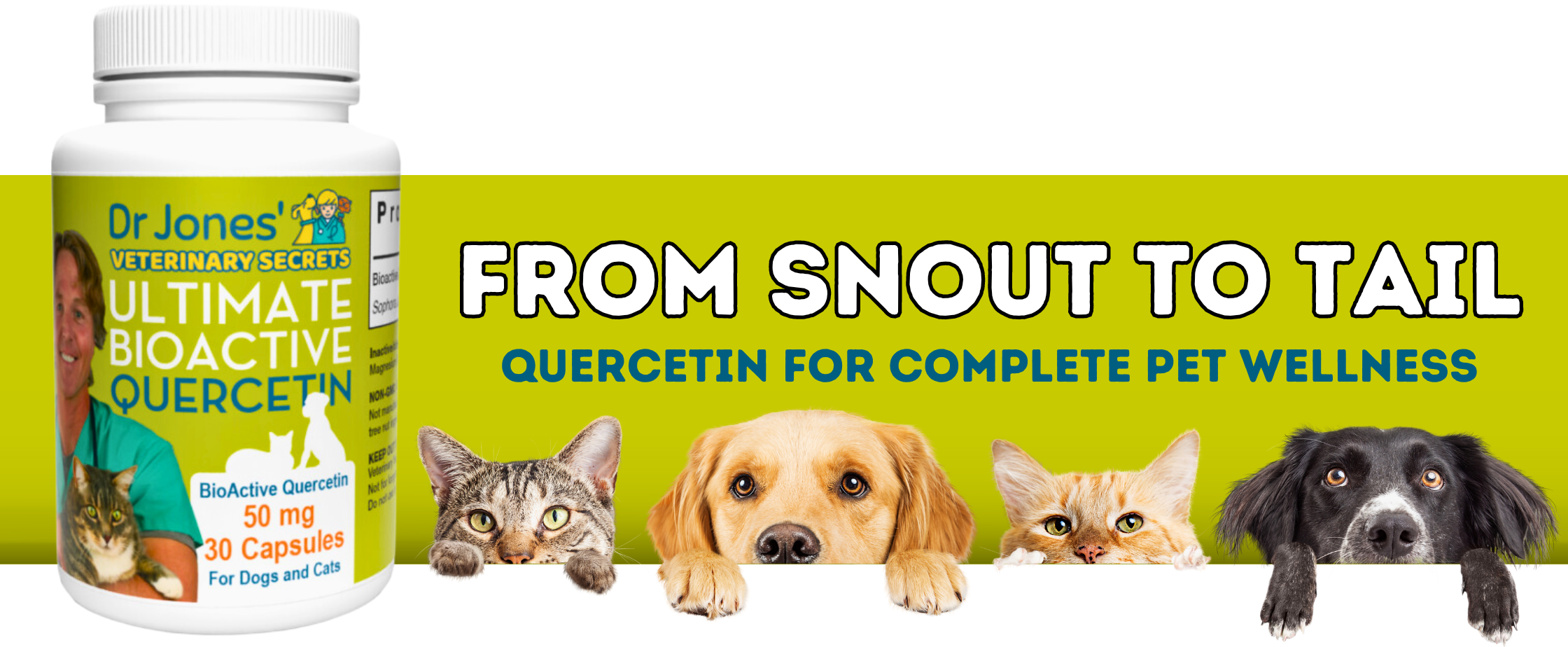Skin infection Remedies

Skin disease in dogs and cats often can show up as secondary skin infections.
One of the most important ways to help your pet with this is by managing the underlying cause which is most often inflammation due to allergy.
Here is a dog groin with pyoderma. There are red circular crusted lesions that some clients would confuse with ringworm. It’s a bacterial skin infection secondary to allergy.

Cats seldom get pyoderma, but it shows up as a serious looking hot spot

What is pyoderma?
Pyoderma is defined as a bacterial skin infection. Pyoderma may also be referred to as impetigo, especially in young puppies.
What are the clinical signs of pyoderma?
Signs Include:
-
circular crusts
-
redness on the skin in circles
-
oozing areas of skin
-
can be an odor
-
dry or flaky patches of skin
-
hair loss
-
itching
Pyoderma in cats is less common, but typically shows up as
-
Rash and redness on the skin
-
Scaling and crusting of the skin- rough, dry patches on your cat’s coat
-
Crusted and eroded papules- small, raised bumps
-
Itching and Hair loss
-
Foul odor goes hand-in-hand with pyoderma
Conventional Treatment
Antibiotics for 3-6 weeks, (Cephalexin)
topical antibacterial shampoo (ie chlorhexidine)
Alternative Options
Homemade Shampoo
- 1 cup of black/green tea
- 2 tablespoons ACV
- 40 drops of Tea Tree Oil (not for cats)
- 2 tablespoons of Castile Soap
Honey
It has some well documented antibacterial properties, especially in relation to pyoderma. It can be applied topically, as well as given orally at doses of 1/2 teaspoon/10lbs twice daily.
Dark, unpasteurized honey is best.
Propolis
Also known as Bee Glue as it reinforces the bee hive, and it has studies showing it to be particularly helpful for the bacteria causing skin infection. It can be sprayed on topically, as well as given orally.
It’s very safe, and really a great product for you to consider. Plus you can spray it on topically and it’s not all sticky like honey.
I have used the oral capsules with good success.
Oral doses of 100mg/10lbs daily.
Coconut Oil
It Can Kill Harmful Microorganisms
The medium-chain fatty acids in coconut oil have antimicrobial properties that can help protect against harmful microorganisms.
This is especially important for skin health, as many types of skin infections, including acne, cellulitis, folliculitis and athlete’s foot, are caused by bacteria or fungi.
Applying coconut oil directly to the skin may prevent the growth of these microorganisms. This is due to its lauric acid content, which makes up nearly 50% of the fatty acids in coconut oil and can fight harmful microorganisms.
One study tested the antibacterial properties of 30 types of fatty acids against 20 different strains of bacteria. Lauric acid was found to be the most effective at blocking the growth of bacteria.
Tula does get a recurring infection in one nostril, and I have found that topical coconut oil is the most effective way to treat it.
Olive Leaf Extract
An important olive leaf benefit is its ability to fight off infections, including candida infections, meningitis, pneumonia, chronic fatigue, hepatitis B, malaria, gonorrhea, shingles and tuberculosis. It also naturally treats ear, dental and urinary tract infections.
A study done in 2003 proved that olive leave extracts have an antimicrobial effect against bacteria and fungi. This suggests that olive leaf works as a natural antibiotic, due to it’s ability to fight some bacterial infections.
In the study, the olive leaf extracts killed almost all bacteria tested, including dermatophytes (causing infections on the skin, hair and nails), candida albicans (an agent of oral and genital infections) and Escherichia coli cells (bacteria found in the lower intestine).
Doses (these are the published ‘human’ doses)
Olive leaf capsules: Olive leaf extract is also available in capsule and soft gel forms. Capsules can be taken to support immune function and provide powerful antioxidants. Capsules can also be taken to promote cardiovascular health. The standard olive leaf extract dose ranges from 500-1,000 milligrams daily. It’s best to divide your daily dosage into 2-3 smaller doses and take it with a meal or snack.
Dog and Cat Doses
- Dose range of 1mg-5 mg/lb twice daily
- Start at the lower end, and up, assuming no vomiting/diarrhea
- I would use this as a ‘new’ antiviral, and as a ‘natural’ antibiotic
- For example I would consider using this on my dog/cat with a skin, bladder infection, or even kennel cough.
Quercetin
Yes the impressive flavonoid found in apple peel is also being studied for its antibacterial activity. Here is one paper on it: https://pubmed.ncbi.nlm.nih.gov/35458691/

P.S. The most important thing to do is try and prevent skin infections in the first place by managing the underlying allergies. The omega 3 fatty acids, and natural antihistamines such as Quercetin are key.

I already gave the 6 weeks of the homemade shampoo and the quercetin. Still having issues but I see improvement. Her skin is red and wandering if the shampoo is getting too strong for her.
Do I stop the shampoo and continue quercetin and start on all of the above suggestions by giving propolis, olive leaf extract and honey. Do I give all these at the same time? I am giving fish oil for omega 3 and transitioning her food to your food allergy meal, turkey, brown rice, carrots, sunflower oil, egg. REALLY NEED HELP!!!!
This cured my dog with Chinese herbs from a Naturopathic vet. My dog needed to be put down smelly, skin itching, then pus in eyes, balding for 12 years. Vets only gave cortisone for 10 years causing blindness still no healing, dog suffered. Cause of this is Vax.x all of them (cause allergies $$$). Taking these herbs In 3 weeks he was healing!! and then cured! at 13 yrs old. Si Miao Four Marvels Formula 4 oz bottle(get online). (His hair grew back no pus in eyes, looked like a puppy, stopped itching)
Shake bottle.. Give 10 drops, 2 times a day – mix with little 2 tsp? approx. of hot tap water, let sit few min. then add to the dogs food, as i said do this 2 times a day. My dog was 18 pounds but i suggest this amount for all size dogs unless smaller. This formula was given for UP to 4 months, no more. Stop after 4 months, its heals the gut. Also NO GRAINS, no drinking water from puddles, ponds etc.. Try Changing food to game meat and veggies only. like Rabbit, kangaroo bison venison, maybe lamb. Always rotate meats, No chicken or beef etc… Also, this vet gave daily small amounts of zinc for his skin like 7 mg., and 1 drop vitamin D 400 ui, FIsh oil (1/8 tsp little or less) , refrigerated Acidophilus by Genestra one whole capsule a day for first month then 1/4 capsule a day, and 1or 2 drops a day of Al-gen by Genestra has rosemary and juniper, add 1/4 tsp pumpkin seeds, gradually the animal will get better be patient never give too much of anything. My DOG was cured!!! Always give an animal less than 1/4 herbs what a human takes. Put the above in the dogs food once a day unless mentioned twice. Thank you Jesus. Hope Dr. Jones sees this. When trying shampoos etc..products, if you notice there’s no improvement at all after few weeks i think its better to stop and change… can aggravate the little guy/gal especially if there’s any redness. Everybody’s different with sensitivities. No Vaxx (rabbies etc..) Dogs seem to have allergies to chicken and birds and beef now.
My dog have having bad allergies black yest and red patches on stomach he doesn’t itch or lick been on all meds shot, weekly bath with meds shampoo need help